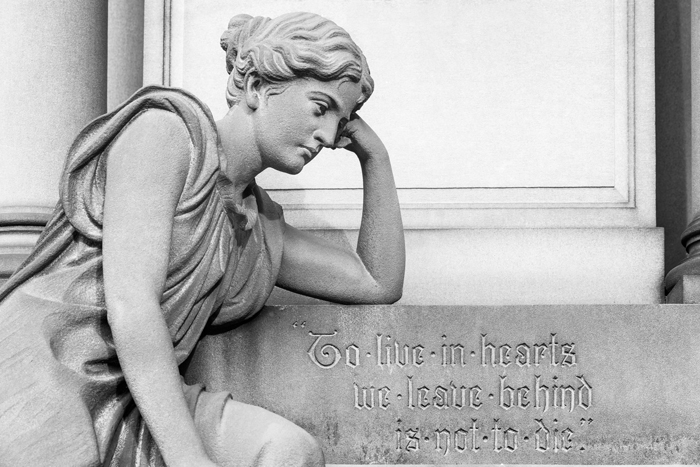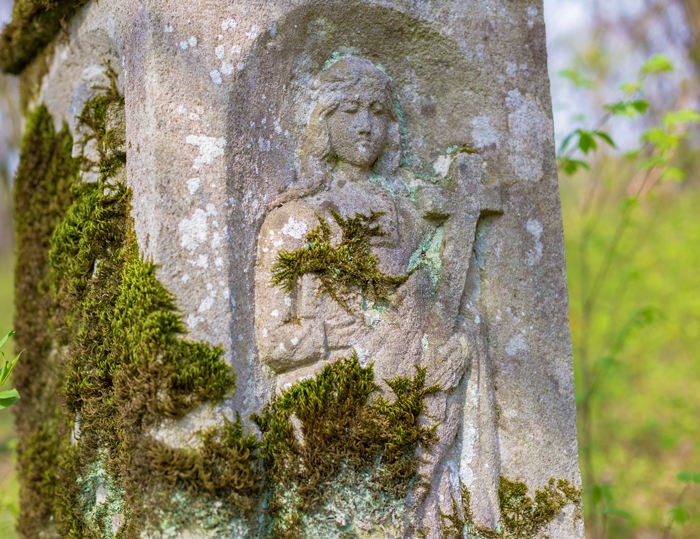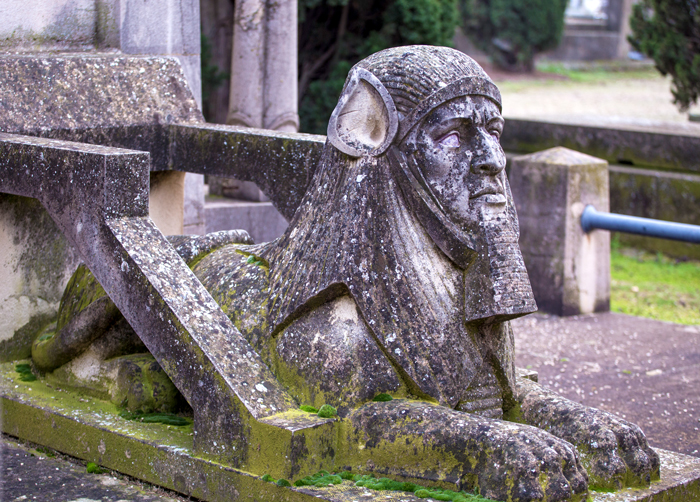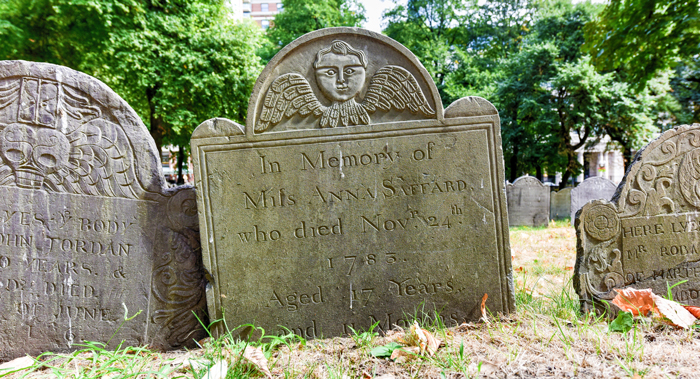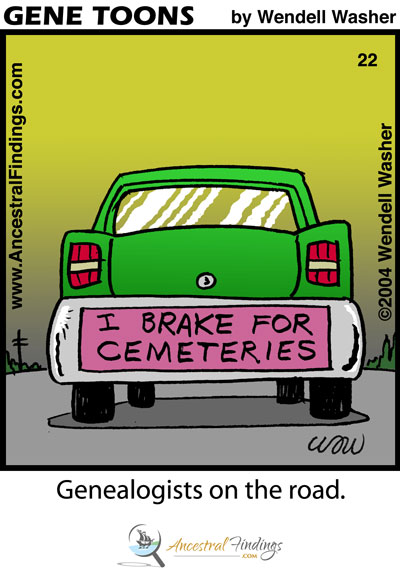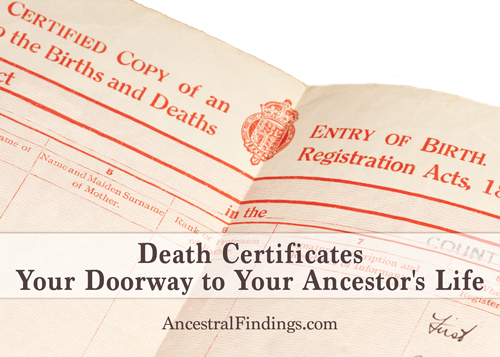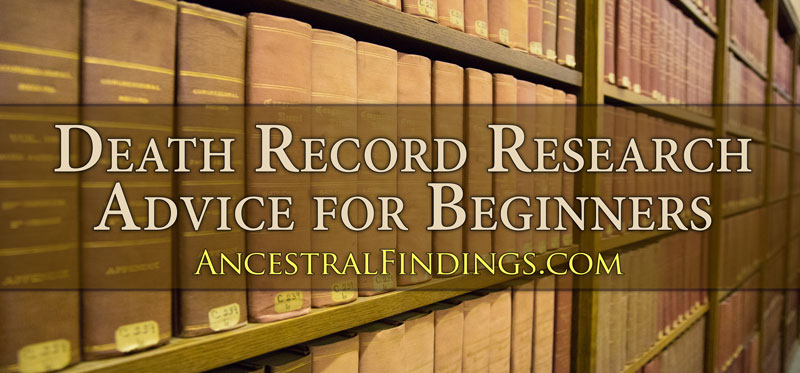As a genealogist, you have probably spent quite a bit of time touring and searching through cemeteries, looking for your ancestors and clues to their lives and relationships. There is no doubt they can be a treasure trove of genealogical information, which is why they are considered one of the staples of genealogical research. While visiting cemeteries and doing your research on them, looking for unmarked graves and taking the positioning of the graves into consideration and such, is definitely a must in your family tree work, you should also take some time to consider the headstones themselves. By this, I mean you should look beyond just the names and dates on them. The headstone can tell a very interesting story about your ancestor on its own.
Believe it or not, headstones are works of art. It takes skill and talent to carve stone, and the stones that have intricate inscriptions or designs built into them are museum pieces, very real remnants of times gone by. If they weren’t in the cemetery, they would actually be in local museums. In fact, there are some places where new buildings have disrupted old cemeteries, and if the bodies weren’t able to be moved, the headstones were… usually into a local museum or historical society. People go to great lengths to preserve headstones.
In fact, some people go to cemeteries just to admire the beautiful artwork of the headstones, even without knowing anyone buried there. They go, because the headstones are art pieces, and they want to enjoy them. Some headstones have become famous for their beauty and intricate artwork, even if the person underneath them was never famous themselves. You will find pages on the Internet devoted to headstone artwork, and these are not genealogical websites, but sites set up to admire and research headstone art.
What is on a headstone is not only a testament to the stonework artists of centuries past and their skill, they can also tell you much about your ancestors, beyond just the name and dates. Sometimes, the headstone will tell us things we won’t find on any written record. Knowing this, the next time you go to a cemetery, be sure to take some time to really examine the headstones you find, and get to know the people beneath them more intimately as a result. You’ll be glad you did it.
A headstone can be a window into the life of an ancestor. There is significance in what was chosen to go on the headstone. While the meaning of imagery changes with the times, you can get a good idea of what the headstone was meant to convey if you do a little research on headstone customs of different time periods. Often, religious imagery was used, and the choices can tell you about the religious affiliation and beliefs of your ancestor and their family.
As an example, some common 17th and 18th-century American headstones include the following images:
- A Hand Pointing Up — It means “a pathway to heaven”
- A Flying Angel — It means “rebirth” or “resurrection”
- A Crown — It means “the glory of life after death”
- A Trumpeting Angel — It means “resurrection”
- A Weeping Angel — It means “grief and mourning”
You will see other things on colonial headstones, such as death’s heads, skulls, flowers, cherubs, and more. Puritans tended to use more macabre imaging than other religious sects, which used more hopeful and cheerful imagery on their headstones.
Of course, it is not just ancient headstones that have symbolically meaningful imagery. Modern headstones may include symbols or outright mentions of a person’s religious affiliation. If they do, you can surmise quite a bit about them, including their religious beliefs, and what those religious beliefs may have prompted them to do in their lives. Members of the LDS (Mormon) church, for example, typically do genealogy that they file with the church. Seeing an LDS designation on someone’s headstone would open up a new avenue of research into that person, by suggesting a researcher search the LDS genealogy database at FamilySearch.org for anything the deceased submitted to the church in the way of genealogy or family history.
Modern headstones also tend more toward showing something personal about the people underneath them, more than just the religious beliefs and affiliations of times past. Today, headstones are more likely to show a person’s hobbies. It’s a popular common theme in them for the past few decades. Cars, boats, fishing gear, pets, sporting or gaming equipment, and even paraphernalia for arts and crafts, and more have been etched into modern stones. Entire poems or personal stories about the people under the stones are sometimes etched into them, as well.
If a person belonged to a particular organization, that organization’s insignia may be on the headstone, which is true going back to at least the mid-19th century or even older. Masonic imagery is a common one, as is the regalia of Daughters of the American Revolution. The entire stone may be a symbol of the organization, such as the tree trunk-shaped stones of members of the Woodmen. If you see insignia you recognize, or if you see something on a stone that may be insignia to a group you don’t know about, both things can open up new avenues of research for you with that ancestor. Discover what group the insignia belongs to, then look up records of that group in the area in which your ancestor lived, during the time they lived, to look for more information on them, their group involvement, their family, and their lives.
If your ancestor was a veteran, the name of the war they fought in may be on the headstone, as well as their rank, branch of the military, and even their regiment. All of these things are bright, shining clues directing you to military records to look up your ancestor’s history of service, and any pensions they may have applied for because of this service.
Headstones were usually chosen with care by the deceased in life, or by their family. That means symbols and inscriptions on them are there because they represent things our ancestors or their families wanted others to remember about that person. This makes them excellent windows into the lives of our ancestors. All we have to do is look at all of the other things besides names and dates they are telling us.

